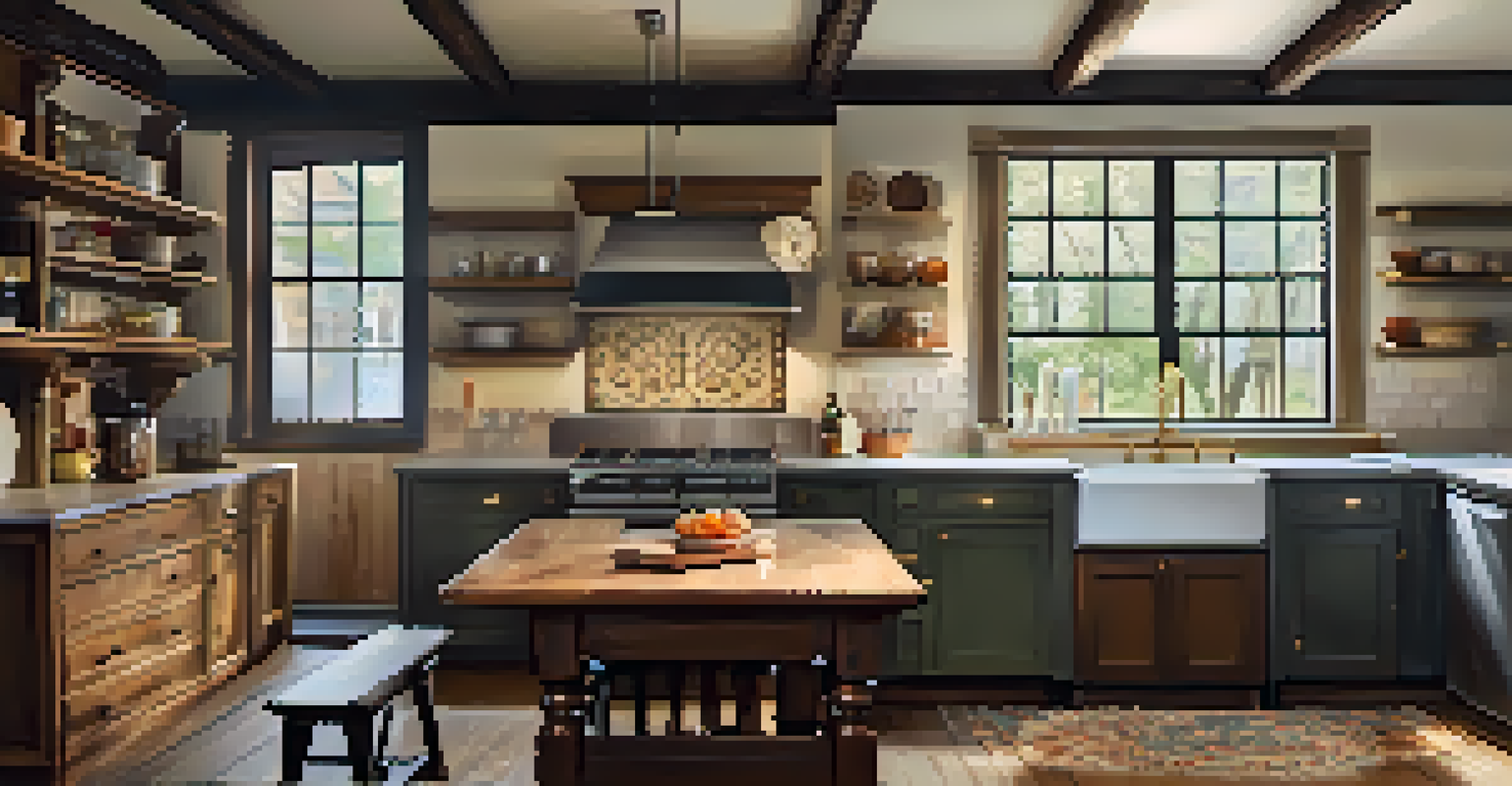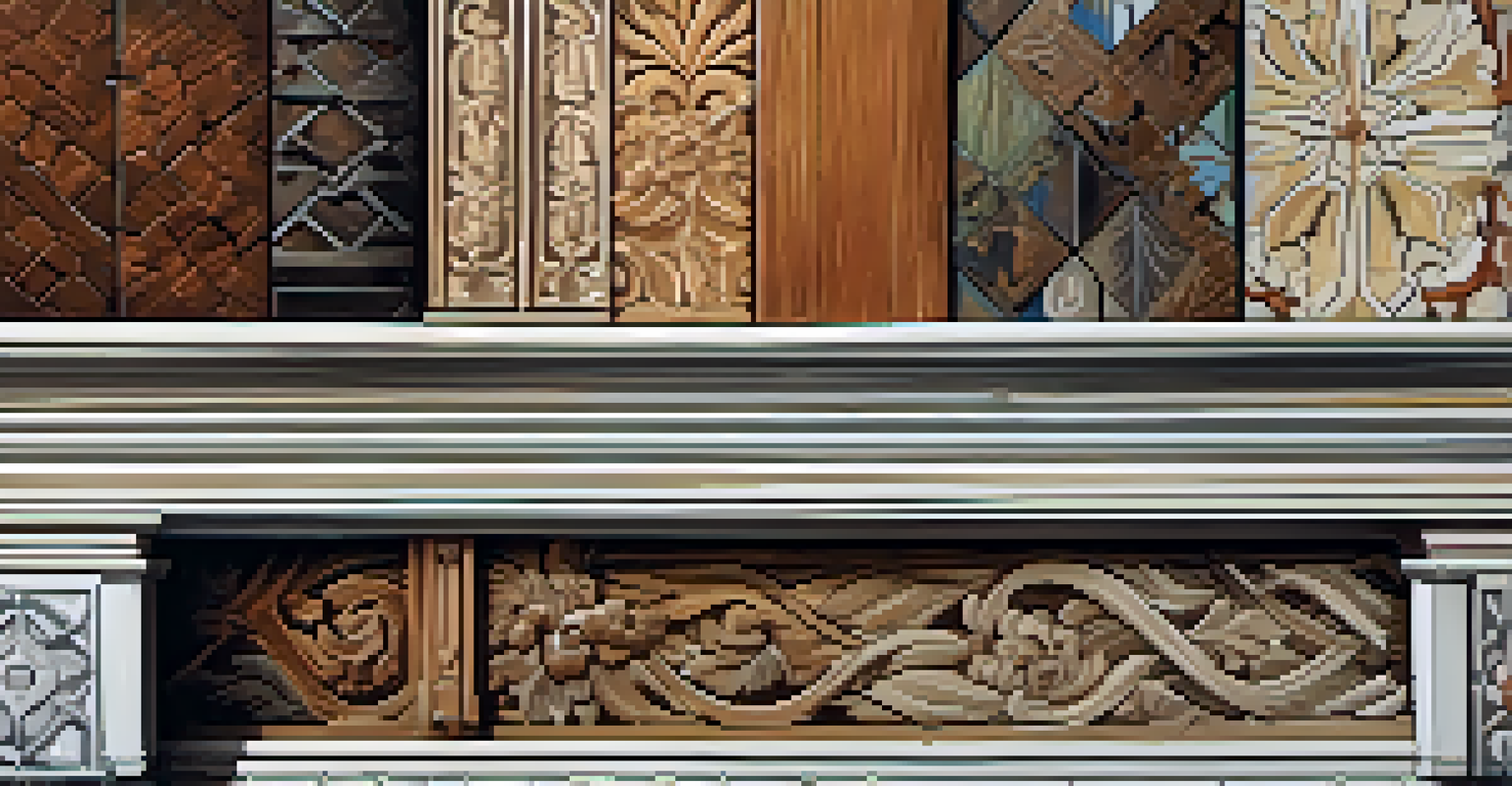Avoiding Common Pitfalls When Renovating Historic Properties

Understanding Local Regulations and Guidelines
Before diving into your renovation project, it's crucial to familiarize yourself with local regulations. Many historic properties are protected by laws that dictate what changes can be made, requiring permits and approvals. Ignoring these guidelines can lead to costly fines or even the reversal of your renovations.
Preservation is not just about saving old buildings; it’s about saving the stories that go with them.
Take the time to research your property's history and the specific regulations in your area. This might involve visiting local government websites or speaking with preservation experts. By understanding these rules from the outset, you can avoid surprises that derail your project later on.
Remember, following these regulations not only keeps your renovation legal but also respects the historical significance of the property. Embracing the guidelines allows you to create a space that honors its past while making it functional for modern living.
Assessing the Condition of the Property
One of the first steps in any renovation project is assessing the property's condition. This means looking beyond the aesthetic and identifying structural issues, such as foundation problems or outdated electrical systems. A thorough inspection can save you from extensive repairs down the line.

Consider hiring a qualified inspector who specializes in historic properties. They can spot potential issues that may not be apparent to the untrained eye, ensuring your renovation starts on a solid foundation. This investment in a professional assessment can pay off by preventing costly surprises.
Know Local Regulations First
Understanding local regulations ensures your renovation project complies with legal requirements and respects the property's historical significance.
It's also beneficial to have a clear understanding of the historical materials and techniques used in the original structure. This knowledge can guide you in making informed decisions about repairs and replacements, preserving the integrity of the property while updating it for today’s standards.
Choosing the Right Materials and Techniques
When it comes to renovating historic properties, using the right materials is crucial. Authentic materials that reflect the period of the home not only enhance its charm but also maintain its historical value. For instance, if your property originally featured wood siding, opting for vinyl may detract from its character.
The past is never dead. It's not even past.
Researching and sourcing period-appropriate materials can be a rewarding endeavor. Many specialty suppliers focus on historic renovations, providing options that match the original aesthetic while meeting modern standards. This allows you to blend functionality with authenticity seamlessly.
Additionally, consider traditional techniques in your renovations. For example, using plaster instead of drywall can help maintain the original look and feel of the home. By prioritizing the right materials and methods, you’ll ensure your renovation respects the past while serving today's needs.
Finding the Right Professionals for Your Project
Choosing the right professionals is essential for a successful renovation of a historic property. Look for contractors and architects with experience in historic restorations, as they'll be familiar with the unique challenges these projects present. Their expertise can make a significant difference in the outcome of your renovation.
You might also benefit from consulting with preservationists or historians who can provide valuable insights into the property's history and significance. Collaborating with a knowledgeable team can ensure that your renovations are both respectful and practical, marrying modern needs with historical integrity.
Assess Property Condition Thoroughly
A thorough assessment of the property's condition can help identify structural issues early, preventing costly repairs later.
Don’t hesitate to ask for references and review past projects. A reputable professional will be proud to showcase their work and can provide you with confidence in your choices as you embark on this exciting journey.
Budgeting for Unexpected Costs
Renovating historic properties often comes with unexpected costs that can derail your budget. It's wise to plan for these surprises by setting aside a contingency fund, typically around 10-20% of your total budget. This cushion can help you navigate unforeseen expenses without the stress of financial strain.
Common unexpected costs might include structural repairs, replacing outdated plumbing, or addressing issues found during inspections. Being mentally and financially prepared for these scenarios allows you to maintain your renovation's momentum and reduces the likelihood of sacrificing quality for budget constraints.
Additionally, keep in mind that investing in quality materials and skilled labor can save you money in the long run. While it may be tempting to cut corners to stay within budget, remember that these choices could lead to further expenses down the line, undermining your renovation efforts.
Maintaining Historical Integrity During Renovations
One of the biggest challenges when renovating historic properties is maintaining their historical integrity. This means being mindful of the original architectural details, materials, and design elements that give the property its character. Striking a balance between modern needs and historical preservation is key to a successful renovation.
When making decisions, always ask yourself how each change will impact the property’s historical value. For instance, if you plan to modernize the kitchen, consider how you can do so while keeping the original layout or features intact. Small adjustments can make a significant difference in preserving the home’s charm.
Budget for Unexpected Costs
Setting aside a contingency fund for unexpected expenses is essential to maintain your renovation's progress without financial strain.
Engaging with local historical societies or preservation boards can provide guidance and resources. They may offer insights on best practices and examples of successful renovations, helping you navigate the delicate balance between modern updates and historical preservation.
Planning for Future Maintenance and Upkeep
After completing your renovation, it's important to plan for future maintenance. Historic properties often require more upkeep than newer homes, so developing a maintenance schedule can help preserve your property’s condition. Regular inspections and timely repairs can prevent minor issues from escalating into major problems.
Consider documenting your renovation process and any changes made to the property. This documentation can serve as a valuable resource for future maintenance, ensuring that you or subsequent owners understand the property’s history and the work that has been done.

Lastly, don’t forget to budget for ongoing maintenance costs. Just as you set aside funds for unexpected renovation expenses, allocate a portion of your budget for future upkeep. This foresight will help keep your historic property in excellent condition for years to come.